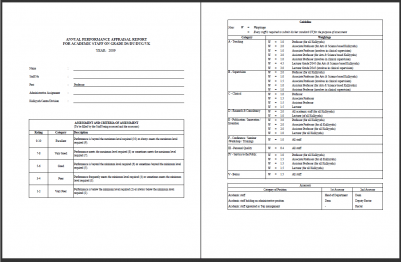Performance Management is Broken
There are 8 key reasons why performance management systems are broken. They are an administrative not a management task, they do not improve performance, do not align individual effort to the organisation’s priorities. Further assessment is subjective and usually subject to bias, more a measure of the supervisor staff relationship than of job performance. Performance feedback rarely happens, and when it does it is often not timely nor constructive. Performance at work does not follow a bell curve distribution despite the fashion for forcing managers to rate their staff using such a formula.
For all these reasons performance management systems are dreaded and discredited. Yet it is a relatively simple task to make the change to a next generation approach.
What went wrong?
It is almost universally agreed that the current approach to Performance Management is not working. Almost 98% of Human Resources professionals grade their Performance Management systems as unsatisfactory.
Most people would agree that the purpose of performance management is to make sure that all staff pull in the same direction. That day to day they know what is expected. That they receive guidance and assistance in problem solving. That staff are rewarded and recognized for a job well done.
Instead many systems do the opposite. It is clear that poor Performance Management systems demotivate staff and frustrate managers.
It sounds straightforward, yet Performance Management is the most difficult aspect of human capital management to get working successfully. HR departments are under pressure to simplify practices seen as irrelevant to day to day operations.
How has this happened?
There is a very simple explanation. The traditional approach, before computers, was to fill out a paper annual appraisal form. It was a major exercise to get this done.
When , or if, done the information was stored in a filing cabinet and not easily accessible. In light of this compliance was patchy at best and staff and managers worried little about it.
With the advent of digital technology the approach was to simply put this form on line.
Even today most performance management software is really only an online form, albeit with rules for routing the flow of the form for completion and approval.
But the technology provided visibility into the extent of non-compliance. Soon organizations established a process and time frame for using these forms.

The typical Performance Management System;
- Prescribes a period of goal setting. Individuals and managers are to agree ‘SMART’ goals aligned to the organization’s strategy. This is an almost universal practice.
- Has a competency model that aims to communicate expectations of how people will do their jobs.
- Has some form of interim review
- Has a year-end formal review where an overall rating is given.
- This rating may be used in determining salary increments and bonuses.
This sounds fit for purpose but in practice there are 8 reasons it doesn’t work
1. ADMINISTRATIVE EXERCISE THAT ADDS NO VALUE
Formal performance management systems have become a form filling exercise. A practise that is required, and often manipulated, as a basis for annual bonus pay-outs and salary increments.
Staff surveys in many organisations indicate that these systems are not perceived to provide value. They do not help clarify what is expected of employees, and do not provide meaningful feedback for personal and career development.
Senior managers are beginning to count the time and cost involved. The Deloitte organization recently discovered that over 2 million hours were spent on their traditional performance management system across 65,000 employees. This is a total of more than 300 hours per person per year. Many other organizations complain that their operations almost come to a halt at performance appraisal time.

Performance management has been reduced to prescribed steps within formal administrative systems that are disconnected from… day-to-day activities.1
Pulakos and Leary
2. GOAL SETTING MAY NOT DRIVE BETTER PERFORMANCE
Extensive studies in organizational psychology have established that individual performance is enhanced where there are ‘stretch’ goals.
However there are substantial caveats on this finding. Enhanced performance is dependent on the perceived importance of the goal and confidence in one’s ability to achieve it.
Limitations of Goal setting
Management by Objectives is a concept introduced in the 1950s by management guru Peter Drucker. It has been adopted as the central tool of performance management systems.
It does promote a rigid inflexible approach, and Drucker himself said later that “MBO is just another tool. It is not the great cure for management inefficiency”
The definition of a goal is an objective with a specific outcome and time frame. The time frame may be shorter or longer than an annual appraisal period.
The jobs of lower level employees have open ended responsibilities. Re-creating these as specific annual objectives is just a make work exercise. Moreover the convention of having 3-5 goals on a performance appraisal form does not in any way cover the scope or specifics of an individual’s role.
For many professional level employees, work goals will be evolving to fit changing circumstances. Most performance management systems do not support the updating of individual objectives.
Nor do they support the mantra of SMART objectives – objectives that are specific, measurable, achievable, and relevant, as well as time bounded.
For many staff it is extremely hard to come up with an objective that is measurable because there is no available information to measure success. Most goals end up as task descriptions.

3. Individual goals are not aligned to the organisation’s priorities.
The concept of “Cascading Goals” has been promoted as a solution to the function of performance management to get everyone working together to meet organizational priorities.

In practice it is extremely difficult to align individual goals to organizational strategy. Organisation goals are high level. In practice it is a time consuming task to get agreement on how these goals should translate to specific actions and outcomes in different functional areas and levels.
Many on line systems cascade goals via people, from manager to subordinate, but this is not how it works in practice. Managers delegate different tasks to different individuals, so the set of goals in a team are, in reality, all different
4. Core Competencies are assessed subjectively
There are problems with the validity of competencies in performance management.
Competencies are usually defined as knowledge and skills. Most competencies are a prerequisite for performance – they are not work performance itself.
‘Validity’ means we are measuring what we intend to measure, not something else. In performance management competencies may be used to measure the values based behaviours that shape culture. The problem is that these competencies are typically defined at a very high level. Lacking specifics, each manager interprets the descriptions differently, so rating is subjective and inconsistent.

5. 360 feedback may not be helpful in performance reviews

Whilst in theory opinions from those working with us should provide a more balanced assessment of performance, in practice this is not what happens.
Often colleagues do not have the opportunity to observe all aspects of work, and/ or may not be qualified to make judgments.
When raters know their input influences decisions on compensation, research shows a tendency to manipulate the feedback, even colluding with others to do so. The overall result is that ratings tend to be lenient – better than reality.
6. Regular feedback rarely happens
Most engagement surveys show that employees believe they don’t get enough feedback from their manager. Discussions and conversations about performance and career development are infrequent.
Where there is an interim review it adds to the administrative workload and compliance is often not enforced.
7. Forced ranking is not realistic
General Electric made famous the practice of a prescribed formula for performance rating distribution from high to low. Lowest performers were moved on.
While it is claimed to have been successful at GE it has not been successful elsewhere.
In fact depending on the severity of consequences for low performers, it has resulted in damage to employee relationships and even lawsuits. 2

8. Traditional performance management systems measure the staff/supervisor relationship – not actual performance
Most traditional performance reviews use only subjective measures of performance rather than objective measures from operational data.
It has been observed that managers are reluctant to jeopardize their relationships with staff by providing negative feedback, so most ratings are above the midpoint of the scale.
This is consistent with the large body of research finding job performance is rated higher for those staff who have a closer relationship with their supervisor, and for those
Those with political skill also tend to be rated higher, regardless of objective performance outcomes.
What is next generation performance management?
For all these reasons performance management systems have lost credibility with staff and managers .
There is much talk of abandoning performance appraisals and of ‘next generation ‘performance management. What does this mean in practice? Most of the suggestions are for continuing the form based approach but adding ongoing feedback and conversations throughout the year.
Great intentions – which may not happen since most systems lack any means to track this.
Some suggest that performance ratings should be abandoned altogether. There are pros and cons.
Most ‘next generation’ approaches are valid – but they need to be integrated with an evidence based model of performance.
Rather than a system based on digitised forms the Centranum Next Generation Performance Management platform supports this evidence based approach.
References
- Pulakos, E.D. & O Leary, R.S. 2011 Why is Performance Management broken? Industrial and Organizational Psychology, 4 (2011), 146164.
- Bhave, D.P. & Brutus, S. 2011 A Macro Perspective to Micro issues. Industrial and Organizational Psychology, 4 (2011), 165168.



